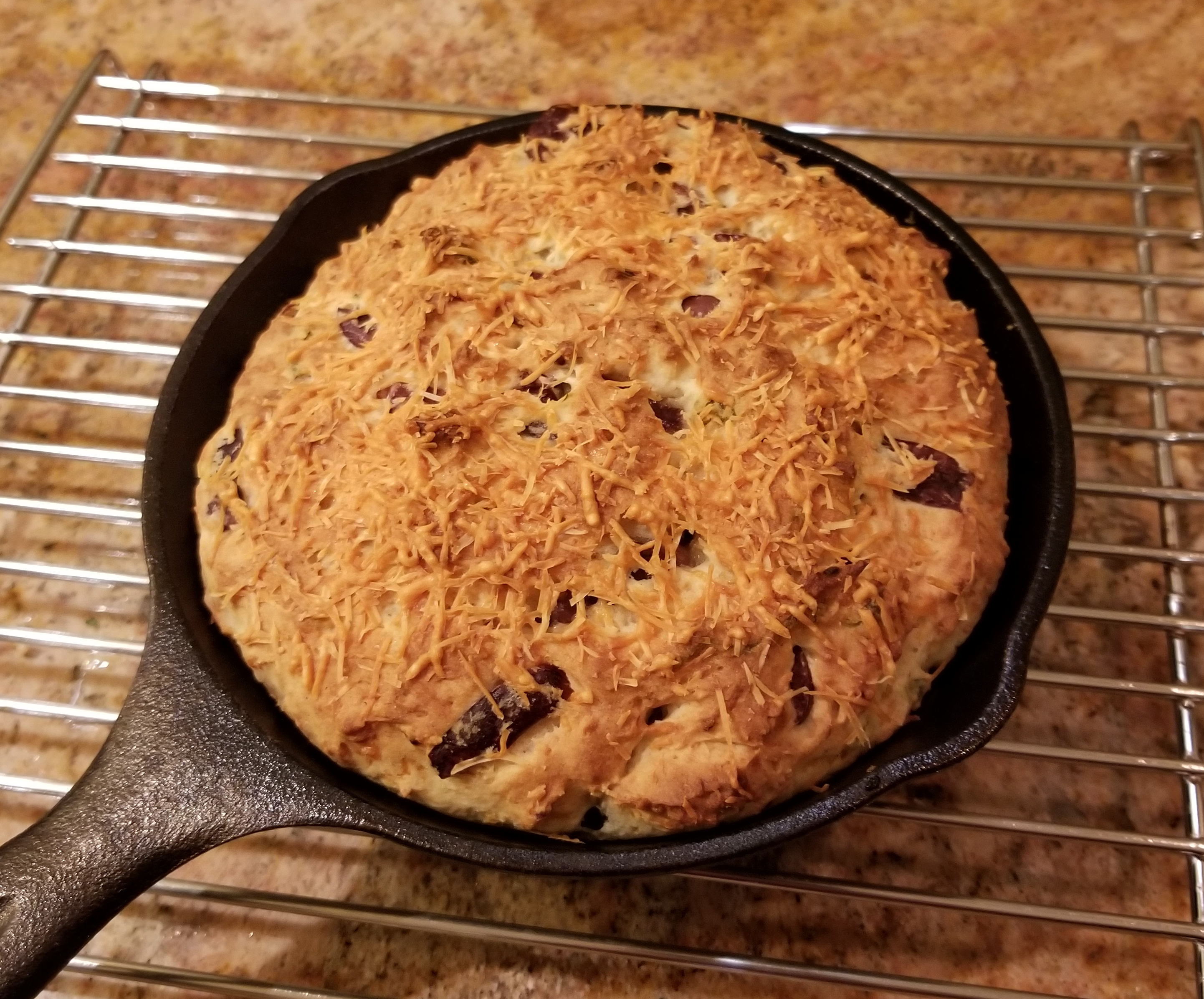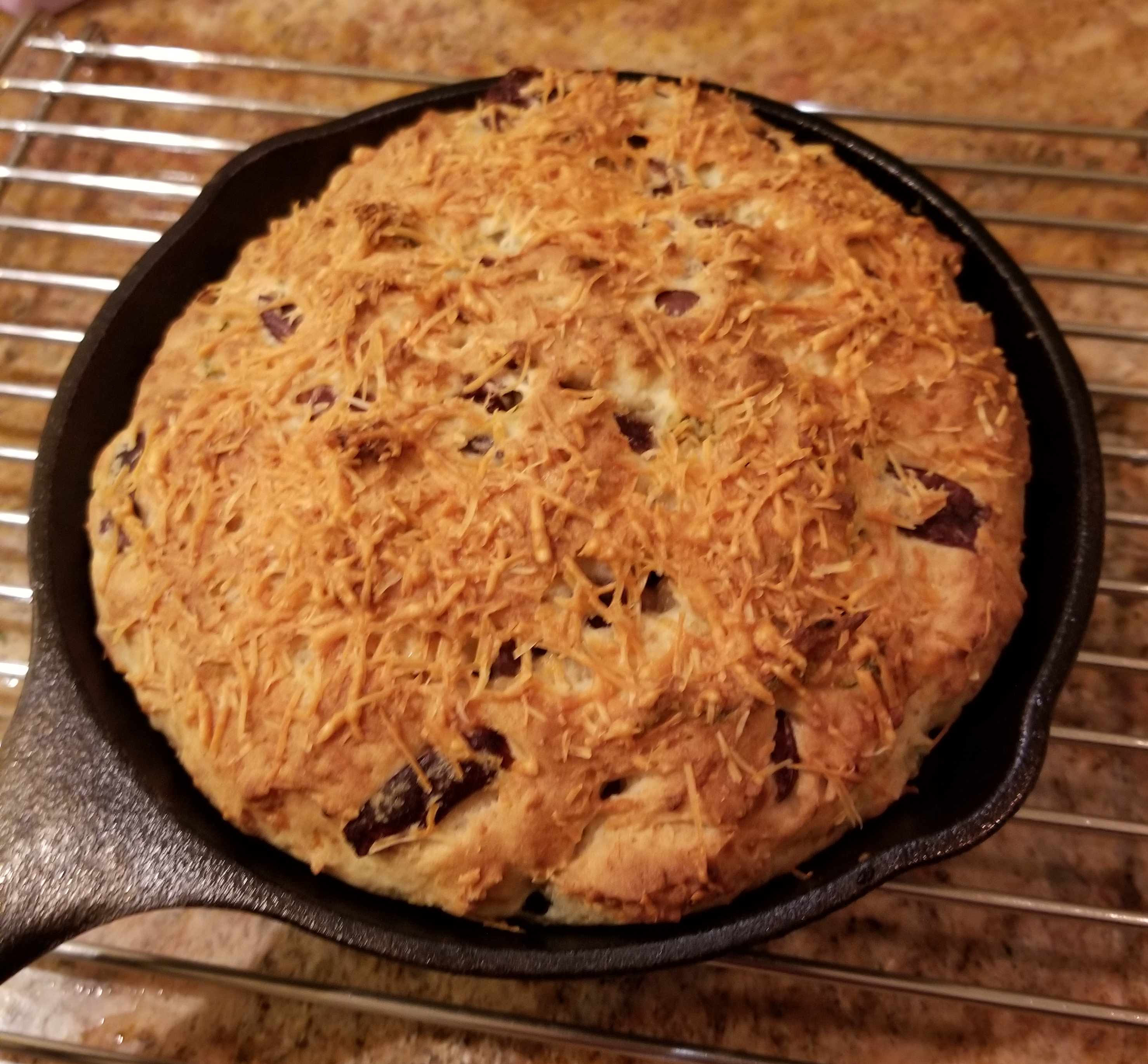A year ago, it seemed that eating bread had become rather passe. What with paleo diets and keto diets and gluten-free diets, the bread basket as a dining room staple seemed to be going the way of the dodo. I myself grew up in a household where bread was literally served at every meal; I eat a lot less bread than I used to, I bake a lot less bread than I used to, and bread has become a bit of a wallflower here at Half-size Headquarters.
Then the pandemic hit, followed closely by the Great Sourdough Quest of 2020. Flour and yeast disappeared from grocery shelves and I started to hear rumors that people were eating bread again. I haven't yet caught the sourdough bug – I'm not prepared to commit that much of my life to a microorganism. But I do eat bread on occasion, and when I do I want it to be special.

I love olives, so I was excited to see this recipe for olive bread. And I was not disappointed! Although technically a quick bread, the Parmesan cheese and kalamata olives give it a sophisticated flavor profile. The sour cream provides a fine moist crumb, and the cast iron pan adds a lovely crusty finish.
Olive bread makes any meal special. It's the perfect companion to a bowl of soup (I especially like it with tomato soup), or a dinner-sized salad. It also makes a hearty accompaniment to a light entree, such as grilled fish or shrimp. Like most quick breads, it's really best when it's still warm from the oven.
Notes
This is a gluten-free bread. If you do not want a gluten-free bread, you can replace the gluten-free and teff flours with a total of 3/4 C all-purpose or bread flour, or whole-wheat pastry flour. In this case, you may omit the xanthan gum.
Because this is a non-yeasted bread, the texture will be best if the batter is not over-handled or over-mixed. This is especially important if you are using a gluten-containing flour: if over-mixed, the bread will become tough, with an uneven texture.
Inspiration
The original Olive Bread came from a publication from America's Test Kitchen, entitled Cook it in Cast Iron. The original recipe was baked in a 10-inch cast iron skillet, and made more bread than we could possibly consume before it spoiled. One of the drawbacks (in a certain sense) of bread with such an assertive flavor is that it's not as versatile as its blander cousins, and when you've had enough of it, you're done.

This recipe is about 1/3 the size of the original. It took just a bit of work to figure out the proportions, since the original recipe called for "1 large egg", and there just is not an easy way to divide that by 3. I finally tried adjusting the other liquid ingredients to get the same amount of overall moisture, and that seemed to work well.

Comments powered by Talkyard.